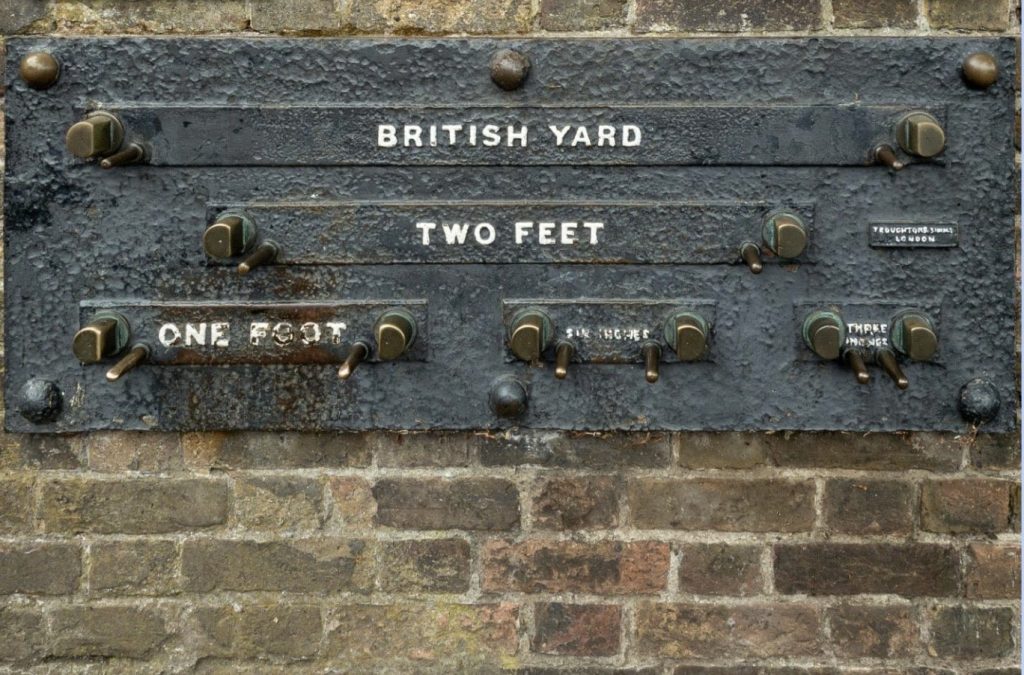If you’ve ever watched an American football game, you might have heard that “the hitter on the field ran that many yards.”
You can guess a yard is a certain distance even without knowing the details. That’s just for most people who are used to thinking in centimeters, meters, and kilometers; it sounds incomprehensible.
This article will explain what a yard is, what it equals, and how to convert 1 meter to yard.
Origin of the yard and meter
According to one version, the English king Edgar, who ruled from 959 to 975, measured the distance from the tip of his nose to the tip of the middle finger of his outstretched hand with a stick. This distance was called a yard, and the stick itself was also called that because it served as a standard. By the way, if you go into the etymology of this word, then it most likely comes from the Old English language from the word “gird,” meaning “stick” or “branch.”
Another version sounds no less prosaic. The yard here was the circumference of His Majesty’s waist or the length of His sword. Over the decades, the size of the stick yard has changed as kings have changed in power. Each of them strove to adapt this size for himself, to be, so to speak, a “standard” for his people. The mess was decided to be eliminated by King Henry I, who legalized a permanent yard in 1101 and ordered to make a standard for it from elm. The British still use it. By the way, this unit of length was additionally divided into the number of parts, a multiple of two: half a yard, a span, a finger, and a nail.
Currently, the yard is standardized and widely used in different countries, especially English-speaking countries, along with other units of measurement, such as meter, foot, and inch.

The meter arose from the need to have a reference unit of length, independent of arbitrariness, and strictly constant and, in case of loss, could easily be restored. In 1791, the French National Assembly appointed a commission consisting of Lagrange, Borda, Laplace, and other scientists to establish such a unit of length. As a result, she chose a unit of length equal to one forty-millionth of the size of the meridian passing through the Paris Astronomical Observatory and called it a meter.
How to convert meters to yards
A yard is a unit of length in English-speaking countries. One yard is equal to 0.9144 meters.
The yard measures objects such as fabrics, carpets, building materials, and sports fields such as American football, soccer, and golf.
The shorthand for the yard is the character “yd.” A yard can also be divided into three parts called feet. One yard equals three feet (3 feet = 36 inches).
Fun fact: A yard was originally defined as the distance between King Henry I’s nose and the tip of his outstretched finger. In today’s world, a yard is defined as exactly one meter plus a slight deviation, and its length is determined between two metal bars in a special room in the British Museum.
Use the formula to convert meters to yards (English: meters to yards). To do this, divide the number of meters by 0.9144. You can also use a metric calculator https://foxconverter.com/unit-converters/length-converter/meters-to-yards.
Formula to convert meter to yard:
1 yard = 0.9144 meters.
For example, to convert 10 meters to yards, you need to perform the following division:
10 meters ÷ 0.9144 meters/yard = 10.9361 yards (rounded to four decimal places).
Thus, 10 meters equals approximately 10.9361 yards.

